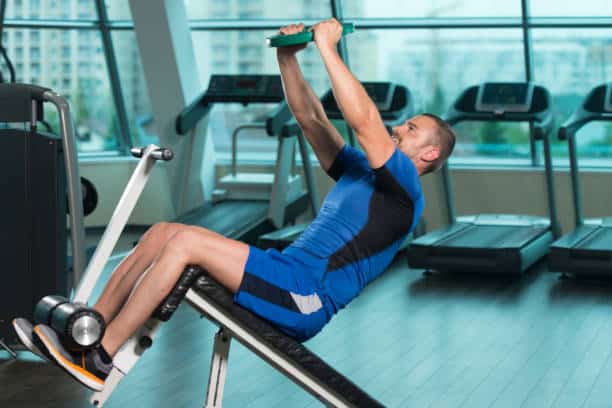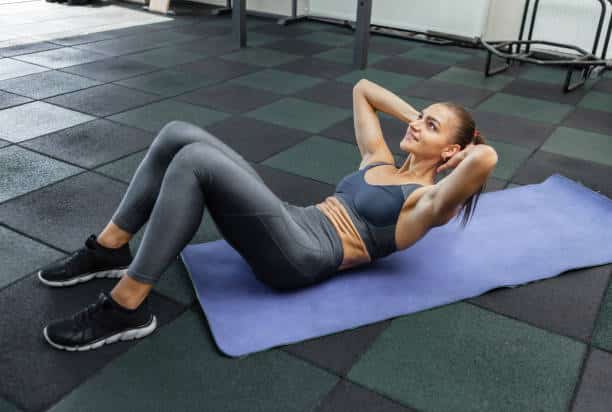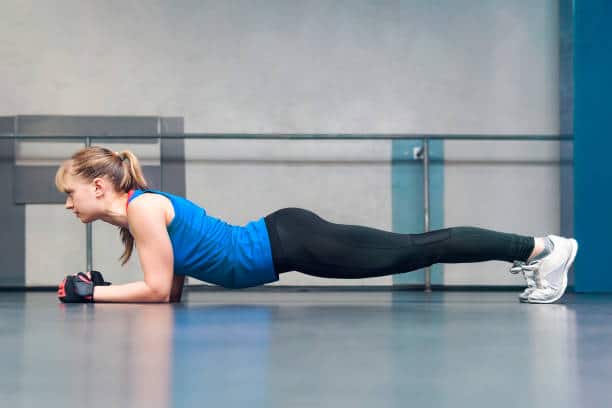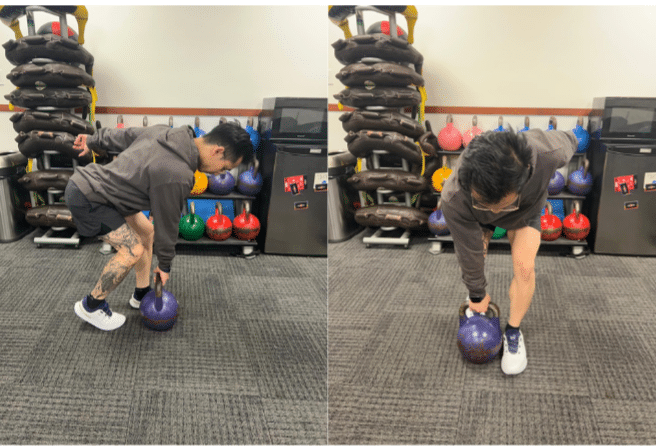May 25, 2023
Anterior Core Training: Unlock Core Strength and Enhance Athletic Performance
Core training can fall within many categories depending on our goals and intentions. Many people want to train core and end up doing crunches and planks or they want to jump to the cool looking exercises like the ab wheel.
First let’s get into what anterior core training is and where certain exercises fall on the continuum to help us develop a well rounded core training program.
Anterior core training refers to core training that utilizes the front of our body, also known as the superficial front line or anterior/front fascial line.
It refers to a fascial line, a network of connective tissue, that runs along the front of our bodies. This line encompasses a group of muscles and fascia that work together to support our core and contribute to our overall physical stability.
The superficial front line primarily consists of the rectus abdominis (the coveted “six-pack” muscles), the external obliques (located on the sides of the abdomen), and the connective tissue that interconnects them. These muscles play a crucial role in core strength, spinal stability, and posture.
Imagine a web of interconnected fibers that spans from the ribcage down to the pelvis, providing a supportive structure for the front of our bodies. When these muscles are strong and properly engaged, they contribute to better posture, improved athletic performance, and a reduced risk of injuries.
By training the superficial front line, we can enhance the strength and functionality of our core, which has a ripple effect on our overall fitness journey. From performing explosive movements and lifting weights to maintaining proper alignment during everyday activities, a strong superficial front line sets the foundation for optimal physical performance and stability.
Exercise Progressions
Many core exercises are chosen due to their “feeling” or “sensation” the lifter feels while they’re doing it. These exercises are usually weighted ab crunches or exercises that challenge the shortened position of the abdominals. The missing component of these type of exercises is the function of the core extends beyond shortening or concentric contractions. The purpose of the core can be broken up into different intentions and phases. In order to get well rounded core training, we want the abdominals to move into lengthened positions and shortened positions as well as being able to maintain an isometric position.


We can refer to the isometric engagement of the core as “spinal stiffness”, this is our ability to set out spine and resist/prevent movement while we do other exercises. The first step for many people should be to learn how to create stiffness in the spine and not have it change. This is where we introduce exercises such as the dead bug, bird dog and plank. These exercises help us understand what is our “core neutral” so that we distribute the work across the body rather than in a singular place like the low back. They are also helpful exercises to develop core endurance.
As we progress, we can move towards more challenging variations of the plank or other isometric based exercises (maintaining a position and not letting it change). The next component of core training is now to allow for controlled movement within the superficial front line. Once we can maintain stiffness, can we continue to maintain that position but allow for some degree of movement. This is where crunches, leg raises, and reverse crunches would come into play but it is also where most people just skip to.
When we skip to the next step, we may struggle to maintain our position in these more advanced lifts and end up using our low back more or using other muscles besides the ones we want to train. If an individual is unable to maintain that spinal stiffness in the easier exercises, the advanced ones may be too challenging.

Shiny Exercises and Toys
Social media shows us all the amazing and possible core exercises that we want to be able to do. We watch these videos and go to the gym and try to do them the best we can. Often, we fall short and can become frustrated. The ab wheel is the perfect example of an exercise and a toy that we see and want to be able to do.
Here are some of the common errors and compensations we see in the ab wheel exercise as well as some regressions to make it easier for us to maintain our control and still get a benefit out of training the superficial front line.
Assuming that we have started with teaching and learning spinal stiffness, we can then move towards more challenging variations of the dead bug such as crunching the torso up ever so slightly while continuing to do the deadback. From there, we can begin to add load and use the “crunch to hollow body” exercise.
Regress to Progress
One way to progress is to regress and make the exercise more accessible before working up to the harder variations. Here are some of the common errors to avoid:
- Arching your lower back: This is a common mistake that can lead to back strain. Focus on maintaining a neutral spine throughout the exercise.
- Rounding your shoulders: Keep your shoulders pulled back and down to avoid unnecessary tension in your neck and upper back.
- Rolling out too far: It’s important to maintain control and avoid overextending your body. Stop rolling out when you feel a strong engagement in your core.
The below video is an example of arching through the low back and losing that core tension / posterior pelvic tilt.
Kneeling Stability Ball Roll Out
Enter the stability ball roll out that is a regression of the ab wheel and can help us to better get the body control and alignment to progress to the ab wheel to get the most out of it. The kneeling stability ball roll out uses a shorter lever thereby reducing the amount of load and work. This helps us to better maintain that posterior pelvic tilt that is necessary.
- Begin by kneeling on a mat with a stability ball in front of you. Place your forearms on top of the ball, keeping your elbows directly under your shoulders.
- Engage your core, glutes, and maintain a straight line from your knees to your shoulders.
- Slowly roll the ball forward by extending your arms while maintaining control.
- Pause briefly when you feel a deep stretch or when your body is almost parallel to the ground.
- Engage your core again and roll the ball back to the starting position.
TRX Superman
Another regression we can use is the TRX superman which allows for us to maintain a more upright position while also adjusting the difficulty. Adjust the angle to change the difficulty; the more horizontal to the ground, the harder it is, the more incline you are, the easier it is. Our goal with this exercise is the same which is to maintain tension throughout the entire body.
- Start by adjusting the TRX straps to mid-length.
- Face the anchor point and hold the handles with your arms extended.
- Lean forward while keeping your body in a straight line from head to heels.
- Engage your core and raise your arms into an overhead position
- Squeeze your glutes by maintaining a tucked pelvis and keep tension in the arms
- Focus on pulling with straight arms towards your starting position
Ab Wheel Roll Out
Finally we get to the ab wheel roll out. We want to avoid the compensation that we discussed earlier where we lose that core tension. As you can see in the video, we initiate the movement by tucking that pelvis and maintaining that throughout the entire range of motion. It’s not necessary to go completely towards the ground, it is better to go as far as you can maintain that core tension AND return to your starting position.
- Start by kneeling on the floor with the ab wheel in front of you. Place your hands on the handles and keep them shoulder-width apart.
- Brace your core, engage your glutes, and slowly roll the wheel forward while maintaining a straight line from your knees to your shoulders.
- Keep rolling out until you feel a deep stretch in your abs or until your body is almost parallel to the ground.
- Pause for a moment, then engage your core and roll the wheel back to the starting position.
- Focus on pulling your arms while keeping them straight, similar to a straight arm lat pull down and flex the torso as you return.
Best Practices
No matter what variation you use, here are some best practices that can be applied to any variation.
- Start with smaller movements: Begin with a smaller range of motion and gradually progress as your core strength improves.
- Keep the core engaged: Maintain a strong core contraction throughout the exercise, as this is essential for stability.
- Breathe properly: Remember to breathe evenly throughout the movement, exhaling as you roll out and inhaling as you roll back.
- Control the rollout: Focus on slow and controlled movements, emphasizing quality over quantity. This ensures proper form and maximizes muscle activation.
Final Thoughts
Try out these regressions to progress your ab wheel roll outs as well as get more out of your core training. While we only discussed the anterior core which works in the sagittal plane of motion. There are many other exercises that we can use that challenge different aspects of our core as well as other planes of motion. Look out for future blog posts about this.
Do you want to learn more about core training? Do you want to become a personal trainer to help others get more out of their training as well? Reach out to us today to find out more about our personal training certification located in Richmond, BC. We are the best option to getting certified as a personal trainer through our hands on practical coaching and learning as we teach the National Academy of Sports Medicine Certified Personal Trainer curriculum.
Tags:
Related Posts
We’re here to help you!
Questions, comments or want to register? Fill out the form below and we will contact you shortly. Thanks!
"*" indicates required fields


